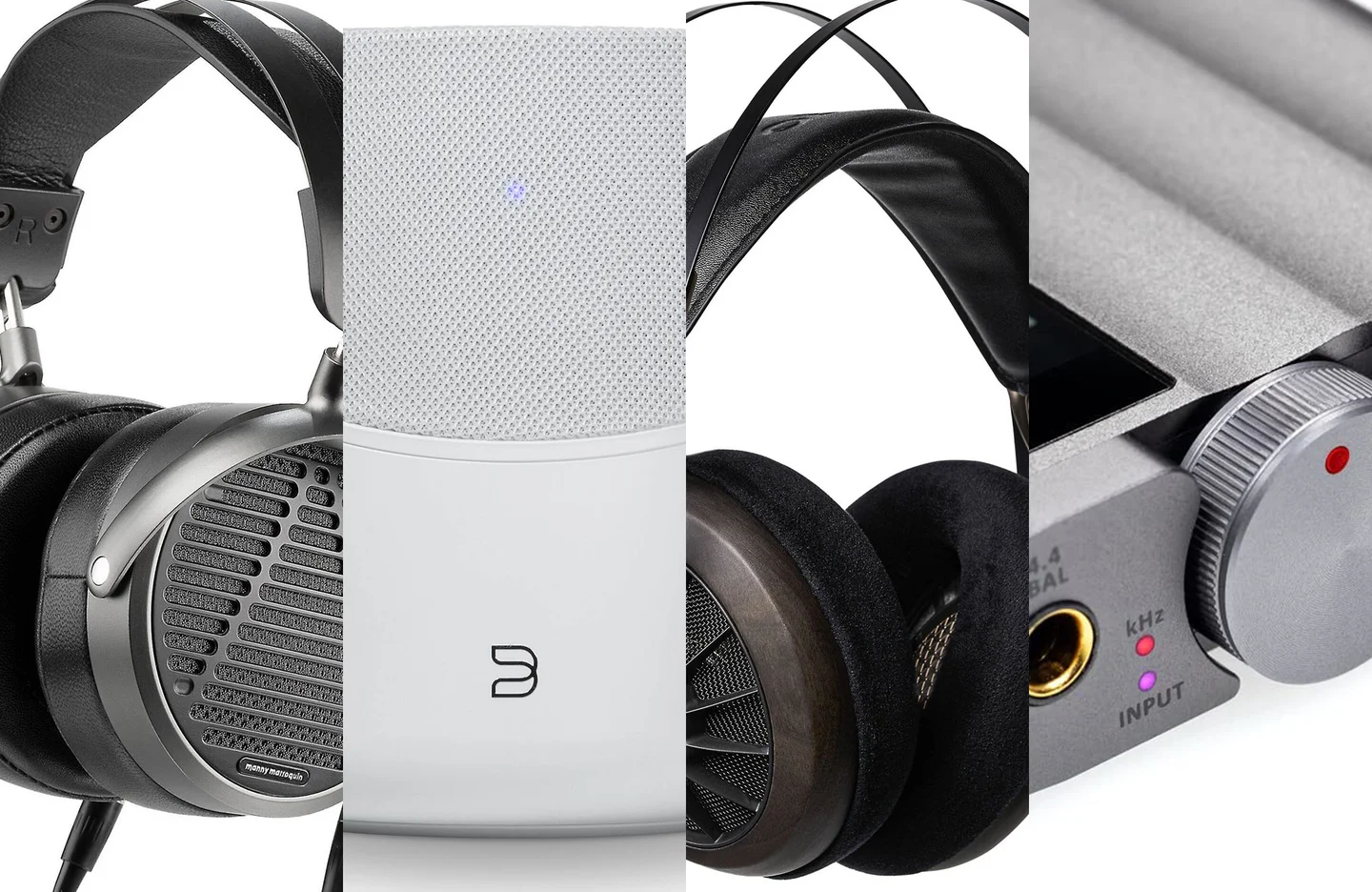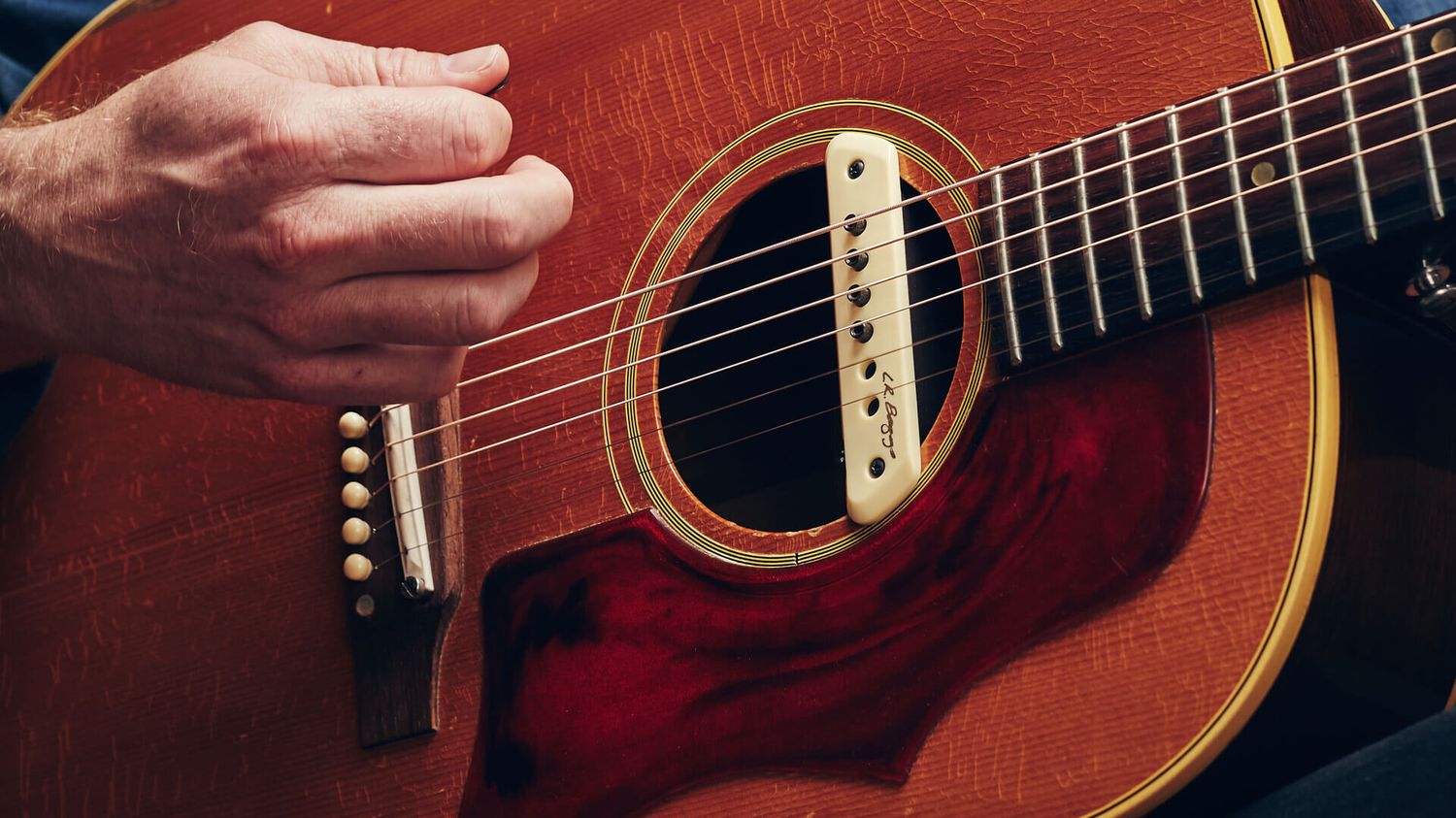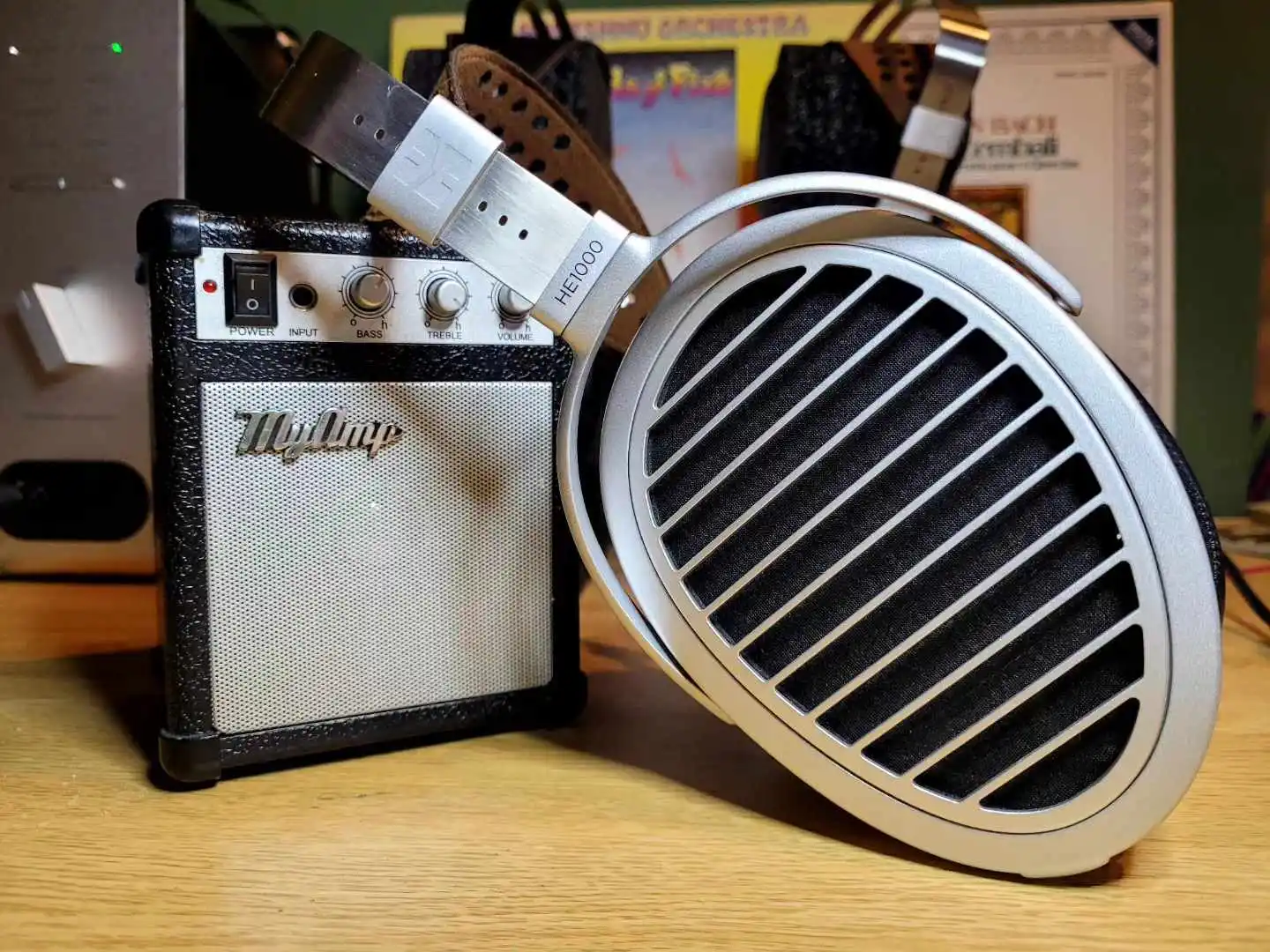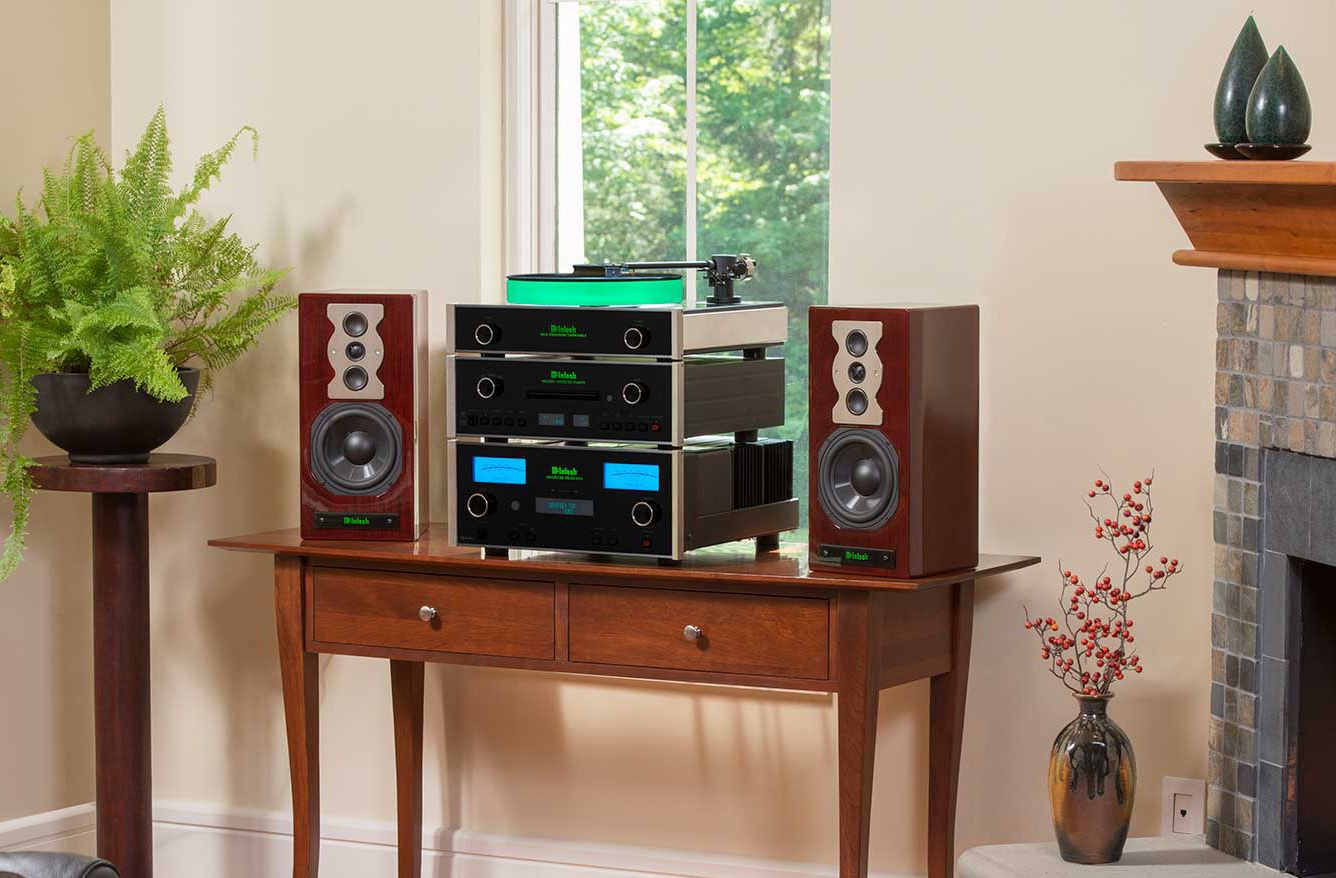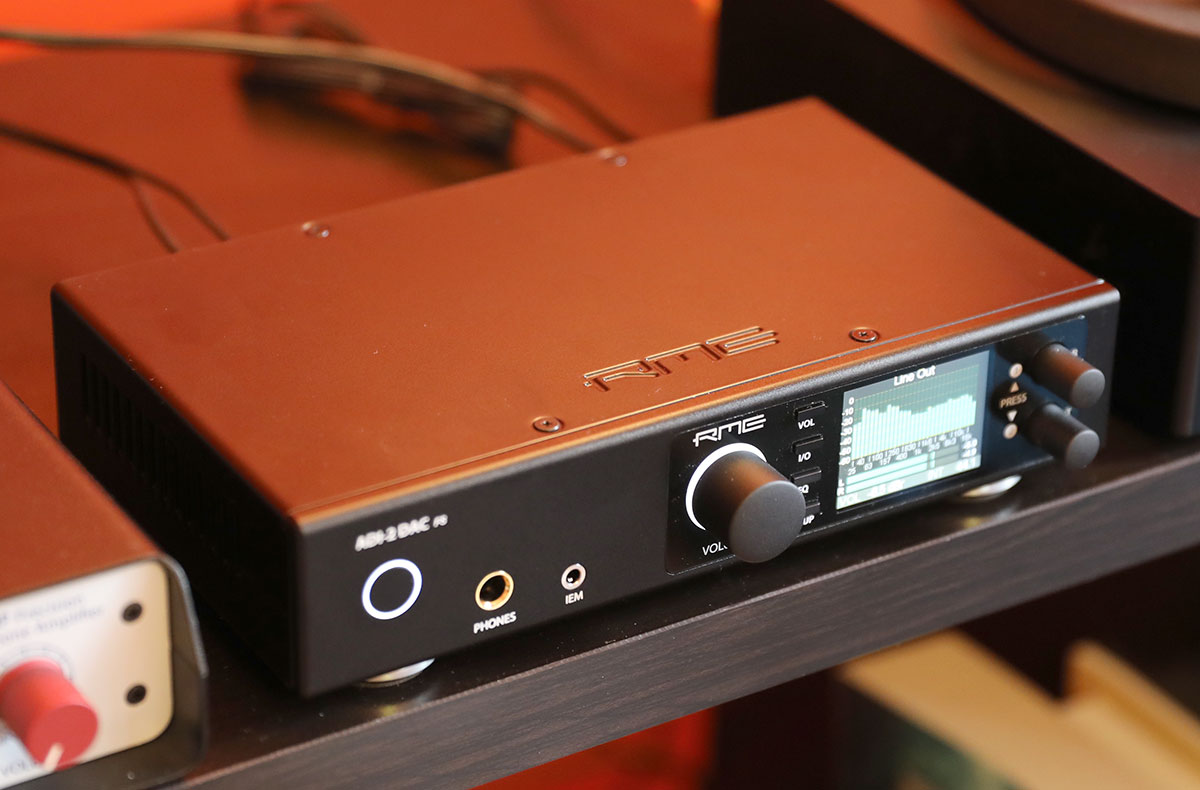Home>Production & Technology>Audiophile>What Is An Audiophile Amplifier
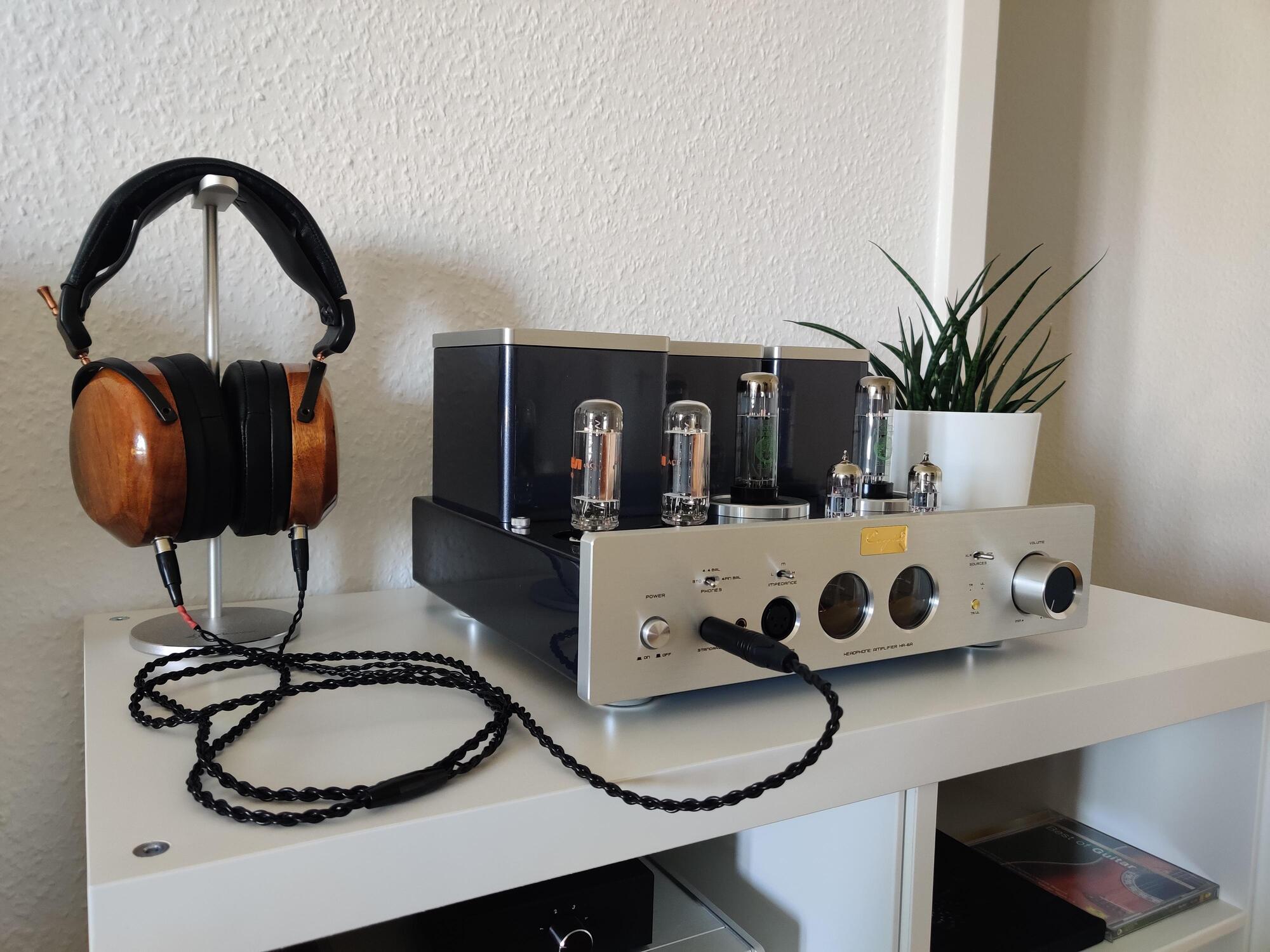

Audiophile
What Is An Audiophile Amplifier
Published: October 14, 2023
Discover the world of high-fidelity sound with an audiophile amplifier. Enhance your audio experience and enjoy the finest audio quality with our top-rated audiophile amplifiers.
(Many of the links in this article redirect to a specific reviewed product. Your purchase of these products through affiliate links helps to generate commission for AudioLover.com, at no extra cost. Learn more)
Table of Contents
Introduction
Welcome to the world of audiophiles, where quality sound reproduction is a revered pursuit. Audiophiles are individuals who have a passion for high-fidelity sound and aim to achieve the best possible audio experience. One of the key components in any audiophile’s setup is an amplifier, which plays a vital role in delivering pristine sound to your speakers or headphones.
In this article, we will delve into the world of audiophile amplifiers, exploring their definition, key features, types, and tips for choosing the right one. We will also address common misconceptions and answer frequently asked questions about these powerful devices.
Audiophile amplifiers, often referred to as power amplifiers or simply amps, are designed to take the audio signal from a source (such as a CD player or turntable) and amplify it, providing enough power to drive speakers or headphones with clarity and precision. These amplifiers are engineered with painstaking attention to detail, incorporating high-quality components and advanced circuitry to minimize distortion and deliver an accurate representation of the original sound.
When it comes to the world of audiophiles, the choice of amplifier is crucial, as it greatly influences the overall sound quality of your audio system. Investing in a high-quality audiophile amplifier can significantly enhance your listening experience, allowing you to hear the subtle nuances and details in your favorite music that might otherwise go unnoticed. The right amplifier can breathe life into your audio, transporting you closer to the original recording with every note.
Next, let’s take a closer look at the key features that distinguish audiophile amplifiers from their mainstream counterparts.
Definition of an Audiophile Amplifier
An audiophile amplifier is a high-quality electronic device specifically designed for audio enthusiasts who demand the utmost precision and fidelity in their sound reproduction. It serves as the backbone of an audio system, receiving the audio signal from a source and amplifying it to power speakers or headphones.
What sets an audiophile amplifier apart from standard amplifiers is its focus on accuracy, transparency, and low distortion. These amplifiers are meticulously crafted with superior components and sophisticated circuitry to ensure that the audio signal remains pure and unaltered, faithfully reproducing the original sound recording with exceptional detail and dynamics.
One of the key characteristics of an audiophile amplifier is its ability to provide ample power to drive demanding speakers or high-impedance headphones. This power delivery is essential for achieving optimal performance and delivering the full dynamic range of the audio signal.
Furthermore, an audiophile amplifier often offers various input and output options, allowing flexibility in connecting different audio sources and equipment. This versatility ensures compatibility with a wide range of devices, including CD players, turntables, streaming devices, and more.
In addition to their technical prowess, audiophile amplifiers are typically designed with aesthetics in mind. The casing and construction of these amplifiers are often sleek and elegant, incorporating premium materials to complement the overall audio system’s visual appeal.
It is worth noting that audiophile amplifiers are not limited to a specific price range or brand. They can be found across a spectrum of prices, from affordable options to high-end models carrying a hefty price tag. The key factor that distinguishes them is their commitment to delivering uncompromising sound quality and performance.
Now that we have a clear understanding of what an audiophile amplifier is, let’s explore some of the key features that set them apart from mainstream amplifiers.
Key Features of an Audiophile Amplifier
Audiophile amplifiers are meticulously engineered to ensure unparalleled sound fidelity and performance. These amplifiers incorporate a range of key features that set them apart from mainstream amplifiers. Let’s explore some of these features:
- High-Quality Components: Audiophile amplifiers are built with premium components, such as high-grade resistors, capacitors, and amplification chips. These components are carefully selected for their superior audio performance and durability.
- Low Distortion: Audiophile amplifiers are designed to minimize distortion and provide a clean, transparent audio signal. Through advanced circuitry and precise engineering, these amplifiers maintain the integrity of the original sound recording, allowing you to hear the music as it was meant to be heard.
- Ample Power Output: Audiophile amplifiers are capable of delivering ample power to drive various speakers or high-impedance headphones. This power output ensures that the audio signal is reproduced with authority and accuracy, maintaining control over the entire frequency range.
- Wide Frequency Response: Audiophile amplifiers are engineered to reproduce a wide frequency range, allowing you to hear both the delicate nuances and the powerful lows of your favorite music. This extended frequency response ensures that no detail is lost in the sound reproduction.
- Impedance Matching: Audiophile amplifiers often feature impedance matching capabilities, allowing them to optimize their output for different types of speakers or headphones. This ensures that the amplifier and the audio devices are working together harmoniously, resulting in the best possible sound quality.
- Multiple Inputs and Outputs: Audiophile amplifiers offer a variety of input and output options, including analog and digital connections. This versatility allows you to connect multiple audio sources, such as CD players, turntables, and streaming devices, providing flexibility in building your ideal audio system.
- Build Quality and Aesthetics: Audiophile amplifiers are often built with solid construction and attention to detail. The casing and chassis are designed to minimize vibration and interference, ensuring optimal performance. Additionally, these amplifiers often feature an aesthetically pleasing design, blending seamlessly into your audio setup.
These key features work together to create a truly immersive and satisfying listening experience. The attention to detail and commitment to sonic purity make audiophile amplifiers a favorite among discerning audio enthusiasts.
Next, we will explore the different types of audiophile amplifiers available, each offering its own unique qualities and characteristics.
Types of Audiophile Amplifiers
Audiophile amplifiers come in various types, each with its own characteristics and sonic qualities. Understanding the different types can help you choose the amplifier that best suits your audio preferences. Let’s explore some of the common types of audiophile amplifiers:
- Solid-State Amplifiers: Solid-state amplifiers use transistors to amplify the audio signal. They are known for their excellent power output, low distortion, and high reliability. Solid-state amplifiers are often preferred for their accurate and detailed sound reproduction, making them a popular choice among audiophiles.
- Tubes/Valve Amplifiers: Tube amplifiers, also known as valve amplifiers, utilize vacuum tubes to amplify the audio signal. They are renowned for their warm and smooth sound characteristics, often described as offering a more euphoric and organic listening experience. Tube amplifiers are favored by audiophiles who appreciate a more vintage, analog sound.
- Hybrid Amplifiers: Hybrid amplifiers combine both solid-state and tube technologies to create a unique sonic signature. These amplifiers often use solid-state circuitry for the preamplification stage and tubes for the power amplification stage. Hybrid amplifiers aim to offer the best of both worlds, blending the accuracy of solid-state amplifiers with the rich tonality of tube amplifiers.
- Class-D Amplifiers: Class-D amplifiers, also known as digital amplifiers, utilize digital switching technology to amplify the audio signal. These amplifiers are highly efficient and compact, making them a popular choice for portable audio devices. Class-D amplifiers are known for their excellent power efficiency and low heat generation, ideal for applications where space and power consumption are paramount.
- Integrated Amplifiers: Integrated amplifiers combine the preamplifier and power amplifier into a single unit. These amplifiers offer convenience and space-saving benefits, making them an excellent choice for those starting to build their audiophile system. Integrated amplifiers typically provide multiple inputs, including analog and digital, allowing for versatile connectivity.
- Separate Component Amplifiers: Separate component amplifiers consist of individual units for the preamplifier and power amplifier. This modular approach allows for more flexibility in customizing your audio system and upgrading individual components over time. Separate component amplifiers are favored by audiophiles who prioritize performance and the ability to fine-tune their setup.
It’s important to note that every type of amplifier has its own sonic characteristics and appeal. The choice between solid-state, tube, hybrid, class-D, integrated, or separate component amplifiers ultimately comes down to personal preference and the specific qualities you seek in your audio reproduction.
Now that we have explored the various types of audiophile amplifiers, let’s move on to the next section, which provides valuable insights for choosing the right amplifier for your audio setup.
Choosing the Right Audiophile Amplifier
Choosing the right audiophile amplifier for your audio setup is crucial to achieving the best possible sound reproduction. With a variety of options available, it’s important to consider several factors to ensure you make an informed decision. Here are some key considerations when selecting an audiophile amplifier:
- Sound Preference: Determine your sound preference and the sonic characteristics you value the most. Are you looking for a clean and analytical sound, or do you prefer a warmer and more euphonic tone? Understanding your sonic preferences will help narrow down the choice between solid-state, tube, hybrid, or other amplifier types.
- Power Requirements: Consider the power requirements of your speakers or headphones. Ensure that the amplifier you choose can provide adequate power to drive your audio devices. Pay attention to the wattage and impedance ratings to ensure a stable and optimal match between the amplifier and your speakers or headphones.
- Inputs and Outputs: Assess your connectivity needs and consider the types of audio sources you will be using. Ensure that the amplifier provides the necessary input options, such as analog RCA, balanced XLR, or digital interfaces, to accommodate your audio devices. Additionally, consider the output options for connecting speakers or headphones.
- Build Quality: Examine the build quality of the amplifier. Look for solid construction, quality materials, and attention to detail. A well-built amplifier will minimize unwanted vibrations and interference, contributing to better overall sound quality and longevity.
- Budget: Determine your budget range for the amplifier. While it’s important to invest in a high-quality amplifier, there are options available across different price points. Consider your budget while keeping in mind that a higher price tag often signifies better-quality components and engineering.
- Reviews and Recommendations: Read reviews, seek recommendations, and explore expert opinions to gain insights into the performance and reliability of different amplifier models. Hearing firsthand experiences and expert advice can help guide you towards reputable brands and models that are highly regarded among audiophiles.
- Audition if Possible: Whenever possible, audition the amplifiers before making a final decision. Listen to your favorite music tracks with different amplifiers to determine which one resonates with you the most. Personal listening experience is essential in choosing an amplifier that matches your unique taste and preferences.
By considering these factors and taking the time to evaluate your options, you can make an informed decision when selecting an audiophile amplifier that will elevate your listening experience to new heights.
Now, let’s address some common misconceptions surrounding audiophile amplifiers to provide clarity and dispel any misunderstandings.
Common Misconceptions about Audiophile Amplifiers
Audiophile amplifiers have long been the subject of various misconceptions and myths. These misconceptions can create misunderstandings and lead individuals to make inaccurate judgments about these high-quality audio devices. Let’s address some of the common misconceptions surrounding audiophile amplifiers:
- Expensive Equals Better: One prevalent misconception is that the most expensive audiophile amplifiers are always superior in sound quality. While it’s true that high-end models often offer exceptional performance and craftsmanship, there are also more affordable options that provide excellent sound reproduction. The price of an audiophile amplifier doesn’t solely determine its quality.
- All Amplifiers Sound the Same: Another misconception is that all amplifiers sound the same. In reality, different amplifiers, such as solid-state, tube, or hybrid, have distinct sonic characteristics. Each amplifier type has its own tonal signature, soundstage, and presentation. It’s important to audition and compare different amplifiers to find one that aligns with your sound preferences.
- Power Output is the Sole Determinant: Some believe that the wattage or power output of an amplifier is the only significant factor in choosing one. While power output is important, it is not the sole determinant of sound quality. Factors such as the amplifier’s design, circuitry, and quality of components also play a crucial role in sound reproduction.
- Older Amplifiers are Always Better: There is a misconception that older amplifiers from previous decades are inherently better in sound quality than newer models. While vintage amplifiers may have a unique sonic charm, advancements in technology have led to the development of new amplifiers that offer improved performance, reliability, and efficiency.
- Amplifiers Don’t Affect Sound Quality: It’s commonly misunderstood that amplifiers have little impact on sound quality compared to other components, such as speakers. In reality, the choice of amplifier significantly influences the overall audio performance. A high-quality audiophile amplifier can enhance transparency, detail retrieval, dynamic range, and overall accuracy, contributing to a more immersive listening experience.
- Only Audiophiles Benefit from Audiophile Amplifiers: It’s a misconception that only committed audiophiles can benefit from audiophile amplifiers. Even casual listeners can appreciate the enhanced sound quality and immersive experience provided by these amplifiers. Whether you are a dedicated audiophile or an individual who simply craves an exceptional audio experience, an audiophile amplifier can elevate your enjoyment of music.
Understanding and dispelling these common misconceptions allows individuals to make well-informed decisions when considering an audiophile amplifier for their audio system. It’s important to approach the selection process with an open mind and a willingness to explore different options based on their actual merits.
Now, let’s address some frequently asked questions about audiophile amplifiers to provide additional clarity.
Frequently Asked Questions about Audiophile Amplifiers
When it comes to audiophile amplifiers, there are several common questions that often arise. Let’s address some of the frequently asked questions to provide further clarity and help you make informed decisions when it comes to these high-quality audio devices:
- Are audiophile amplifiers only for high-end audio systems?
- Can I use an audiophile amplifier with any speakers or headphones?
- Do audiophile amplifiers improve sound quality?
- Can I connect multiple audio sources to an audiophile amplifier?
- How important is the build quality of an audiophile amplifier?
- Can I buy an audiophile amplifier online without auditioning it first?
No, audiophile amplifiers can be used with a wide range of audio systems, from entry-level setups to high-end configurations. The key is to match the amplifier to your speakers or headphones and ensure compatibility with your audio sources.
Audiophile amplifiers can be used with a variety of speakers or headphones, but it’s essential to consider the power requirements and impedance matching. Ensure that the amplifier provides enough power output and is compatible with the impedance of your speakers or headphones for optimal performance.
Yes, audiophile amplifiers are designed to improve sound quality by minimizing distortion and providing a clean and accurate audio signal. They can enhance transparency, detail retrieval, dynamic range, and overall fidelity, resulting in a more immersive and enjoyable listening experience.
Yes, most audiophile amplifiers offer multiple input options, allowing you to connect multiple audio sources such as CD players, turntables, streaming devices, and more. This flexibility enables you to build a versatile audio system tailored to your needs.
The build quality of an audiophile amplifier is important for several reasons. It affects durability, stability, and overall performance. A well-built amplifier minimizes vibrations and interference, ensuring optimal sound quality and reliability.
While auditioning an amplifier before purchase is ideal, it may not always be possible. In such cases, reading reviews from trusted sources and seeking recommendations can provide valuable insights. Be sure to research the amplifier’s features, specifications, and reputation to make an informed decision.
These frequently asked questions cover some of the fundamental aspects of audiophile amplifiers. Remember, if you have any specific concerns or uncertainties, it’s always best to consult with audio professionals or experienced audiophiles for personalized advice.
Now, let’s conclude this article on audiophile amplifiers.
Conclusion
Audiophile amplifiers play a crucial role in delivering pristine sound quality and enhancing the audio experience for enthusiasts and casual listeners alike. These amplifiers are designed with meticulous attention to detail, incorporating high-quality components and advanced circuitry to achieve accurate and transparent sound reproduction.
Throughout this article, we have explored the definition of audiophile amplifiers and their key features, including high-quality components, low distortion, ample power output, wide frequency response, impedance matching, and versatile connectivity options. We have also discussed the different types of audiophile amplifiers, such as solid-state, tube, hybrid, class-D, integrated, and separate component amplifiers, each with its own unique characteristics.
When choosing an audiophile amplifier, it’s crucial to consider factors such as sound preference, power requirements, inputs and outputs, build quality, budget, and user reviews. Auditioning the amplifiers whenever possible can provide valuable insights and help in making an informed decision.
Moreover, we have addressed common misconceptions about audiophile amplifiers, emphasizing that price alone doesn’t determine quality, amplifiers do have distinct sound characteristics, and the choice of amplifier significantly affects sound reproduction and overall system performance.
By answering frequently asked questions, we have addressed concerns and uncertainties surrounding audiophile amplifiers, including their compatibility with different audio systems, impact on sound quality, multiple input options, importance of build quality, and purchasing considerations.
In conclusion, investing in a high-quality audiophile amplifier can elevate your audio experience, allowing you to immerse yourself in the beauty and detail of your favorite music. Whether you prefer the accurate precision of solid-state amplifiers, the warmth of tube amplifiers, or the blend of hybrid or class-D amplifiers, there’s an audiophile amplifier out there that will cater to your preferences and deliver exceptional sound reproduction.
Remember to explore different options, consider your specific needs, and trust your ears when auditioning amplifiers. With the right choice, you can unlock new dimensions of musical enjoyment and embark on a journey of sonic bliss.

